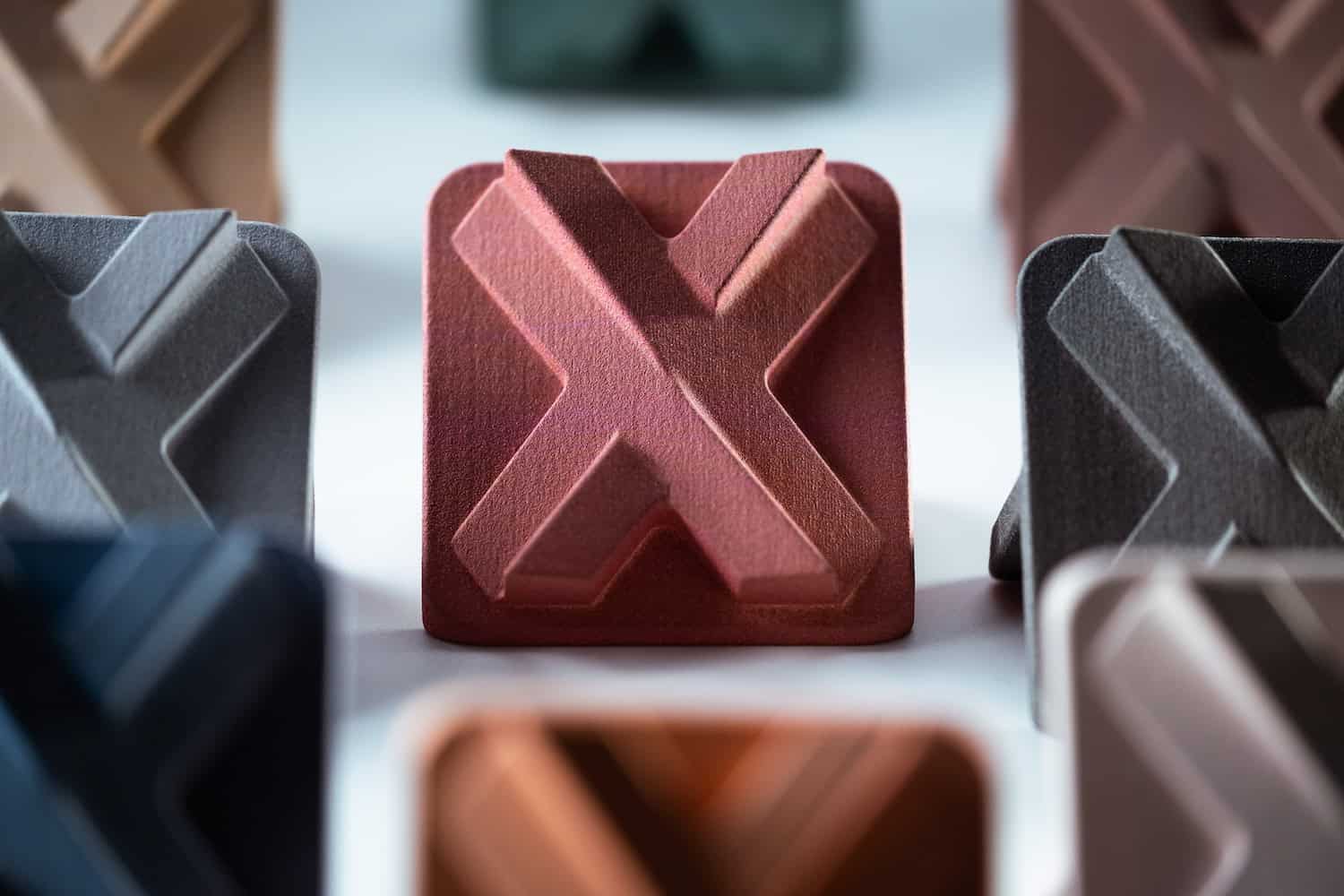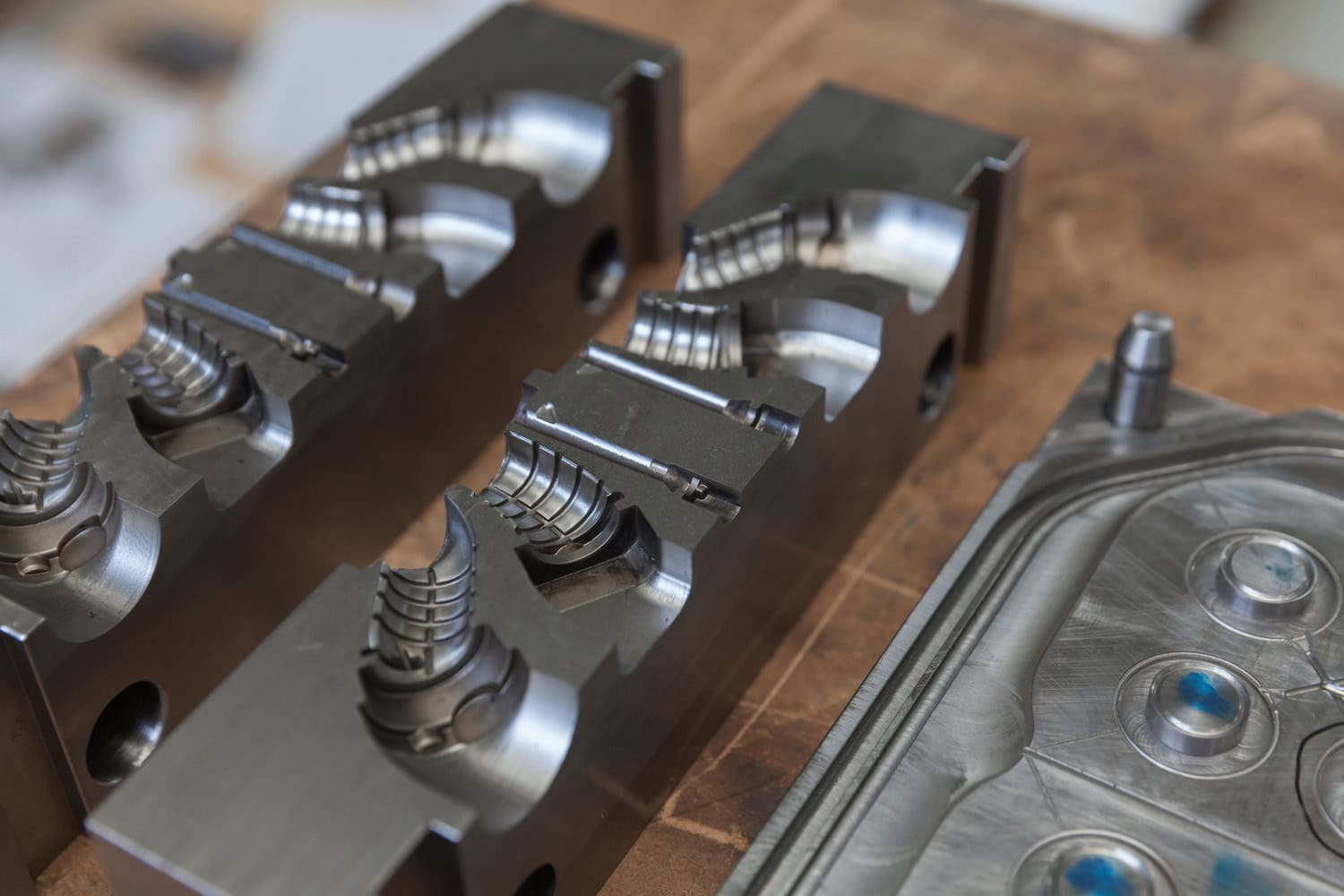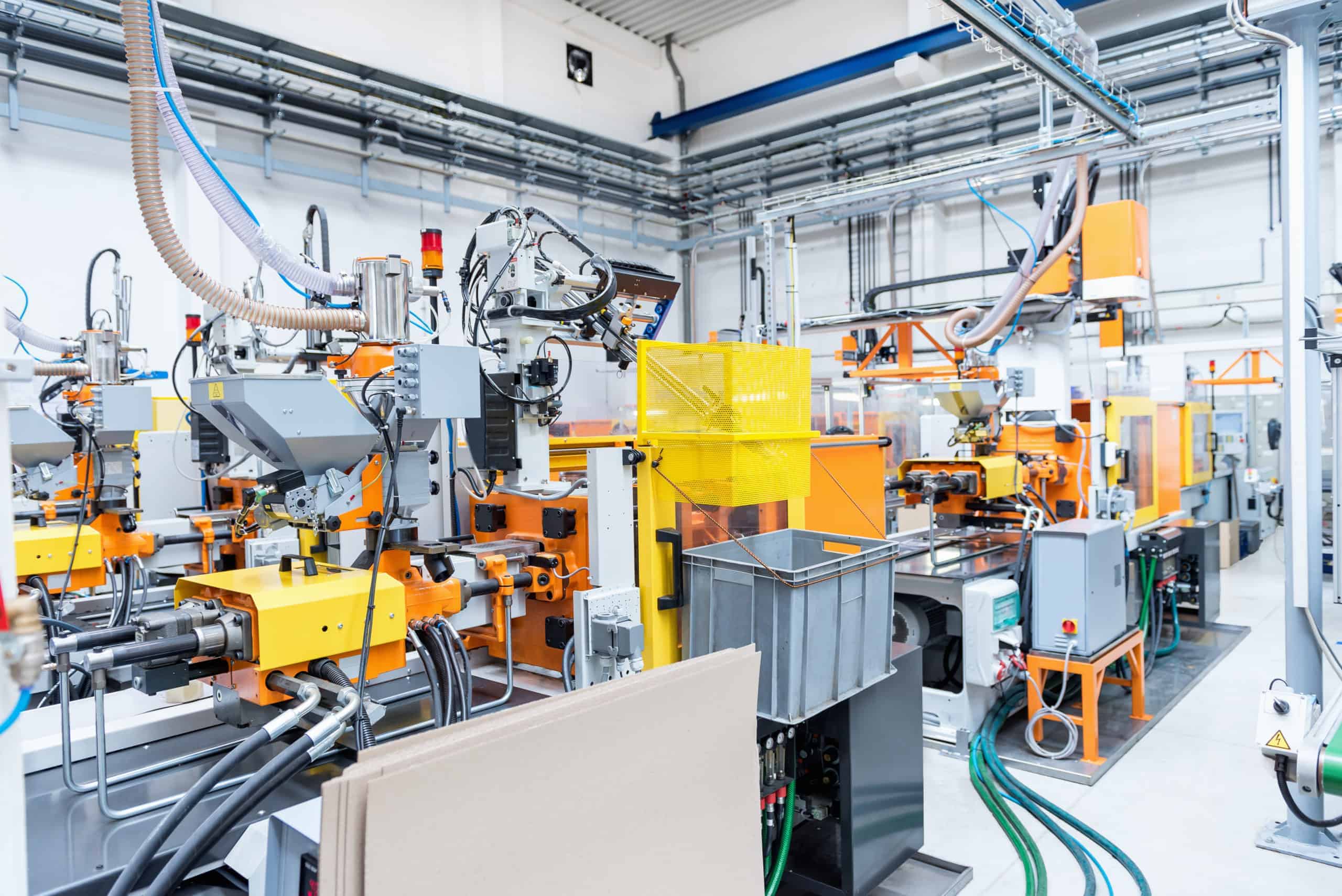In the manufacturing sector, where safety and innovation are paramount, flame-retardant materials have become increasingly significant. These materials have been integrated into manufacturing processes such as CNC machining, 3D printing, and injection moulding, enhancing material resilience and safety standards across industries like construction, transportation, and electronics. The parts produced with such materials have proven effective in reducing risks of ignition, limiting flame spread, and decreasing toxic emissions.
What Are Flame Retardant Materials?
Flame-retardant materials are engineered to be thermally stable, reducing the likelihood of ignition and slowing the spread of fire, making them essential in mitigating risks during incidents like short circuits or accidental flames. For a plastic to be designated as flame-retardant, it has to pass a burn test (the most common being the UL 94 certification), which involves the flame being extinguished within a specified time frame or before a permissible amount of the material has burned.

What is Flame Retardancy
Flame retardancy in plastics such as ABS or PA (Nylon) is achieved by infusing them with flame-retardant chemicals. This process involves endothermic reactions that absorb heat, reducing the material’s temperature, which delays ignition and flame spread. Additionally, it promotes char formation which acts as a protective barrier to further burning.
Flame Retardant, Flame Resistant, and Fire Retardant are not the same
Understanding the distinct properties of flame retardant, flame resistant, and fire retardant materials is crucial because these terms are not synonymous. The table below highlights the differences between them.
|
Terminology
|
Flame resistant materials
|
Flame retardant materials
|
Fire retardant materials
|
|
Definition
|
Made from fibres and materials that naturally have a high resistance to catching fire and sustaining combustion.
|
Treated or developed to inhibit fire initiation and slow down flame spread.
|
Materials or treatments applied to materials that prevent or slow the spread of fire by forming a protective barrier.
|
|
Reaction to fire
|
Resist ignition and prevent the spread of flames even under direct and long exposure.
|
Can resist ignition for a period; when ignited, they burn slowly or self-extinguish once the flame source is removed.
|
These materials may initially resist ignition, and upon burning, produce a chemical reaction that reduces the intensity of the fire.
|
|
Application
|
Typically used in environments where fire exposure is possible but material integrity must be maintained.
|
Used where delayed ignition and flame spread are critical to allow for evacuation and response.
|
Employed in a variety of settings, from textiles to construction, where reducing the fire hazard is a priority.
|
|
Example materials
|
FR-ABS, FR-PVC
|
PA 2210 FR, ULTEM 9085
|
Regulations and Standards for Flame-Retardancy
In manufacturing and materials science, the UL 94 rating stands as a benchmark for assessing how plastic materials used in devices and appliances behave when exposed to a small flame ignition source. UL 94 is a globally recognised standard for testing the flammability of plastic materials, adopted by manufacturers in the United States, Europe, the United Kingdom, and Türkiye, often paralleling other standards like FAR 25.853 in the US and ISO EN 11925-2 in Europe, to ensure compliance with regional safety and quality requirements.
The UL 94 classification system categorises materials into different flammability ratings based on their performance during standardised tests. The ratings are as follows:
| UL 94 Rating | Definition |
| HB | Slow burning on a horizontal part |
| V-2 | Vertical specimen stops burning within 30 seconds with flaming drip |
| V-1 | Vertical specimen stops burning within 30 seconds without flaming drip |
| V-0 | Vertical specimen stops burning within 10 seconds without flaming drip |
| 5VB | Vertical specimen stops burning within 60 seconds without flaming drip. The specimens may have a burn-through (a hole may be present) |
| 5VA | Vertical specimen stops burning within 60 seconds without flaming drip. The specimen may not have a burn-through (no hole) |
Size of Parts or Features Can Impact Flame-Retardancy Rating
UL 94 ratings are influenced by the thickness of the material, affecting the classification of a component. For instance, features or parts with a thickness greater than 3.0 mm are more likely to achieve a UL 94 V-0 classification, the highest standard for fire safety in plastics. Conversely, thinner parts, typically those under 0.75 mm, may struggle to meet this classification.
Here’s an example of how the size of features can impact the UL 94 rating in injection moulding projects with the CX7240 resin:
| UL 94 Rating | Part thickness |
| UL Recognised, 95-5VA Flame Class Rating | ≥ 3 mm |
| UL Recognised, 95-5VB Flame Class Rating | ≥ 1.5 mm |
| UL Recognised, 95-5V-0 Flame Class Rating | ≥ 0.75 mm |
| UL Recognised, 95-5V-1 Flame Class Rating | ≥ 0.6 mm |
| UL Recognised, 95-5V-2 Flame Class Rating | ≥ 0.4 mm |
The thicker the part is, the more flame-resistant it is. With a thickness above 3.00 mm, the part can achieve the highest UL 94 class rating (5VA). See the material datasheet here.
It is crucial to select the appropriate material and thickness in alignment with specific fire safety requirements for each application, ensuring compliance with desired UL 94 standards.


What is the Difference Between HB and V0 Flame Rating?
In addressing UL 94 flame classifications, the HB and V-0 ratings are commonly employed. The key distinction between these two ratings lies in the test orientation (horizontal vs. vertical) and the flame resistance needed for each. The HB classification monitors burn rates to meet specific criteria, but it doesn’t guarantee self-extinguishment post-flame removal.
Most plastics at standard thicknesses, can achieve HB without extra additives. Conversely, V-0 rated plastics demonstrate superior flame resistance, extinguishing post-flame removal, often requiring special additives. For example, PA 12 (Nylon) for SLS in its regular state is HB-rated. But its flame-retardant option, PA 2210 FR, is V-0 rated.
The following table compares the attributes of UL 94 V-0 and HB ratings:
| Criteria | UL 94 V-0 attributes | UL 94 HB attributes |
| Flame retardant process | Utilises high-efficiency additives for quick flame termination and shielding to inhibit fire progression. | Does not employ advanced additives, leading to extended flame extinguishment and possible formation of dripping or flaming debris. |
| Compliance with safety norms | Complies with the most demanding fire safety norms, suitable for high-risk environments. | Meets a basic level of flame resistance, may fall short for stringent fire safety demands. |
| Effect on physical properties | May cause minor alterations in certain mechanical attributes in comparison to the HB standard. | Can lead to altered mechanical properties, typically reducing its strength and durability due to thermal degradation. |
Flame Retardant Materials in CNC Machining
Here are some of the most popular flame-retardant plastics that are used in CNC machining:
| Material | UL 94 Rating | Instant quoting of parts with this material at Xometry |
| Nylon 6 Flame-retardant / PA 6 FR | UL 94 V-0 | No, but can be quoted manually |
| PEEK | UL 94 V-0 | Yes |
| PTFE | UL 94 V-0 | Yes |
| PPS | UL 94 V-0 | No, but can be quoted manually |
| PVDF | UL 94 V-0 | Yes |
UL 94 V-0-rated plastics stop burning within 10 seconds without flaming drip (vertical burning test).
Apart from the materials mentioned above, there are also some less widespread modifications of ABS and PVC, such as FR-ABS and FR-PVC, that are specifically engineered to meet the UL 94 V-0 rating, providing enhanced fire safety for these materials.
Flame Retardant Materials in 3D Printing
The table below showcases a selection of flame-retardant materials commonly used with 3D printing. When selecting a material, consider the flame retardancy requirements of your end-use application, as it’s not always necessary to use the most highly-rated material for projects where a lower fire risk is present.
| Material name | Printing process | Rating | Instant quoting of parts with this material at Xometry |
| ABS-M30 | FDM | UL 94 HB | Yes |
| ABS-ESD7 | FDM | UL 94 HB | Yes |
| ASA | FDM | UL 94 HB | Yes |
| Nylon 12 | FDM | UL 94 HB | Yes |
| PC-ABS | FDM | UL 94 HB | Yes |
| PC | FDM | UL 94 HB | Yes |
| PC-ISO | FDM | UL 94 HB | Yes |
| ULTEM 9085 | FDM | UL 94 V-0 (Tan only)* | Yes |
| ULTEM 1010 | FDM | UL 94 V-0 | Yes |
| RPU 70 | Carbon DLS | UL 94 HB | Yes |
| EPX 82 | Carbon DLS | UL 94 HB | Yes |
| Nylon 12 | SLS | UL 94 HB | Yes |
| Nylon 12 Glass-filled (GF) | SLS | UL 94 HB | Yes |
| Nylon 12 Flame-retardant / PA 2210 FR | SLS | UL 94 V-0 | No, but can be quoted manually |
| Nylon 12 Flame-retardant / PA 2241 FR | SLS | FAR 25.853 | Yes |
*ULTEM 9085 is available in two colours: black and tan. However, only the tan variant is flame retardant.
Adjusting printing parameters such as layer height and infill density can impact the final properties of the printed part. Higher infill densities and smaller layer heights can help improve the material’s fire resistance by reducing the likelihood of air pockets and improving interlayer adhesion.

This video is not specifically a flame retardancy test, but various 3D-printed parts are exposed to a heated metal ball to test their heat resistance
Flame Retardant Materials in Injection Moulding
Here are some commonly used V-0 rated flame retardant materials in injection moulding, available at Xometry for manual quoting:
Is Post Processing Needing for Flame Retardancy of Plastics?
Flame retardancy, unlike properties like corrosion resistance or surface smoothness, is specific to the material used in manufacturing. For plastics, this self-extinguishing trait is either inherent to the material or introduced through additives, and typically does not require post-processing to activate.

Industrial Applications of Flame Retardant Materials
- Automotive industry: Flame-retardant materials are widely used in automotive applications to meet fire safety regulations requirements. For example, flame-retardant plastics, such as fame-retardant ABS, are used in interior components, such as dashboards, upholstery, and wiring harnesses, to reduce the risk of fire in the event of a collision or electrical malfunction.
- Aerospace component fabrication: In the aerospace industry, flame-retardant materials are used in aircraft interiors, cabin furnishings, and electrical components. Many manufacturers tend to use ULTEM 9085 for CNC machining of cabin components, since this material is renowned for its high strength-to-weight ratio and flame retardancy, meeting the UL 04 flammability standards. The use of ULTEM 9085 significantly reduced the risk of in-flight fire hazards and contributed to overall aircraft safety.
- Electronics industry: Flame-retardant materials are essential in the electronics industry to protect sensitive electronic components and electrical devices, and make sure the products meet fire safety standards. Flame-retardant plastics are used in housing materials, circuit boards, and connectors to reduce the risk of fire-related failures and malfunctions.
- Consumer products: Flame-retardant materials are commonly used in consumer goods such as furniture, appliances, and electronics to improve fire safety. For example, flame-retardant fabrics are used in upholstered furniture and bedding to reduce the risk of ignition and slow down the spread of fire.
Get Flame Retardant Parts for Your Project
At Xometry, we have capacities to produce high-quality flame-retardant parts tailored to meet your specific industry requirements. Whether you need components manufactured through CNC machining, 3D printing, or injection moulding, our platform offers instant and manual quoting for a selection of flame-retardant materials certified to UL 94 standards.
Do you doubt the process and material? Check out our materials library and our 3D printing materials decision tool. Then, simply upload your CAD file to our Instant Quoting Engine and receive a quote in a few clicks.
 Europe
Europe  Türkiye
Türkiye  United Kingdom
United Kingdom  Global
Global 

 Login with my Xometry account
Login with my Xometry account  0
0











Comment(0)